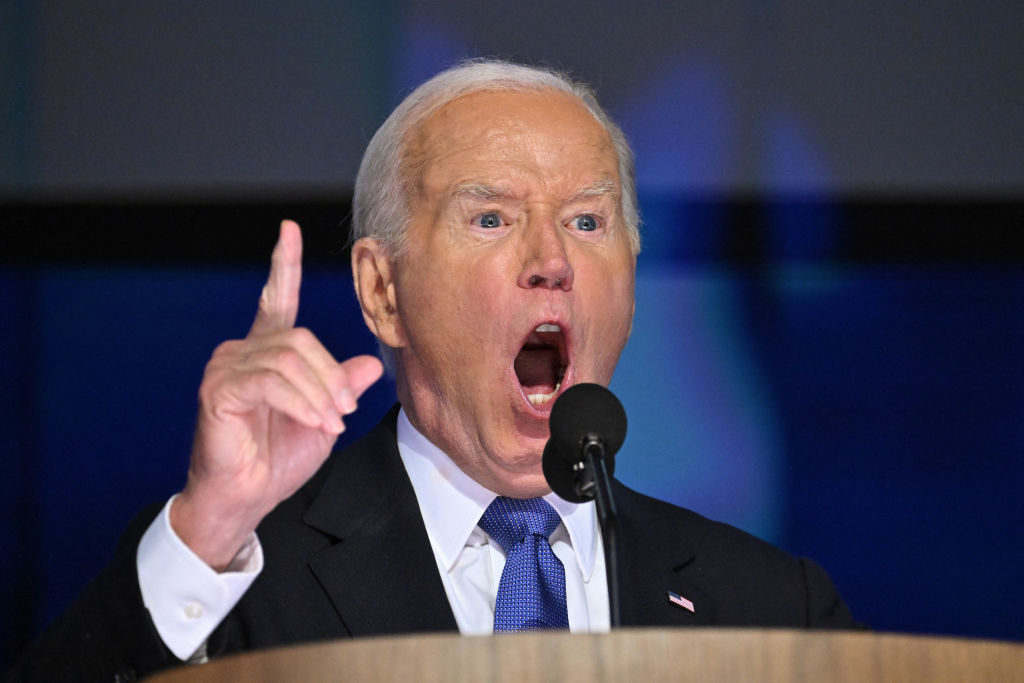
www.dailywire.com
So Much Joy: Joe Biden’s Joy-Filled Farewell Address
Well, the reviews for the DNC are in — and across the political spectrum, on media outlets as far-Left as ABC News to those as far-Left as NBC News, people pretending to be journalists all agree that this Democrat Convention was a joy-filled, folksy, All-American, joy-filled, totally normal, full of joy, freedom-loving gathering of utterly joyful Baby-murdering Communists pretending to ignore antisemitic pro-Islamist terrorist protestors just long enough to get elected, when they can capitulate to them entirely and also full of joy.
The only sour note came from grumpy, non-joyous Republicans, who attacked Democrats for offering free abortions and vasectomies outside the convention center. Republicans are deeply concerned that if Democrats have too many abortions and vasectomies, there won’t be any more Democrats, and Republicans might accidentally win an election and have to govern, which sounds much harder than talking tough on Fox News.
Indoors, the joyful, folksy folksiness began with a touching joy-filled all-American farewell speech by Joe Whatever-his-name-used-to-be, who was joyously dragged onstage by Nancy Pelosi, while he dug his fingernails into the floor leaving inch-deep scratch marks as he joyously screamed, “I don’t want to go, please don’t make me go.”
Far-Left media outlets like CBS and even some far-Left outlets like PBS — or wait, maybe it’s PBS that’s on the far-Left and CBS that’s on the far-Left, I always get those two confused because there’s only one letter of difference between them and they’re both Communist — but anyway, CBS and PBS and all the BS in between agreed that Biden’s farewell speech was a joy-filled, touching, tear-filled, joy-filled touching joy-filled tribute to whatever it was he was talking about.
WATCH: The Andrew Klavan Show
A joy-filled Biden told the joy-filled crowd, “Sure, I thought I could win re-election. But Nancy Pelosi quietly explained that if I didn’t step down, she would cut off my testicles and wear them for earrings, and so with a great sense of regret and also terror because what a horrifying image that is — Nancy Pelosi wearing my nuts for earrings — holy crap, no wonder I can’t remember who I am or even what the end of this sentence is. But my legacy is clear: I passed all kinds of bills with things in them and now the price of bread is more than fifty percent higher than it was when I took office, but I can afford that, because I’ve made tens of millions of dollars peddling my influence to America’s enemies so at least I’m not like that stab-in-the-back SOB Obama who ripped off Netflix for a fortune to make god-awful movies so now Netflix can’t afford to let your grandmother share your subscription anymore and she just sits around wondering where all those nice black Victorian Englishmen on TV went and hoping they didn’t escape into real life where they scare the hell out of her. And now I’m very sleepy, so I have to go back to napping and being the leader of the free world.”
Biden’s joyful speech was followed by joyful speeches by the joyful Obamas. First, Michelle Obama joyfully told the joyful crowd “Donald Trump is trying to make people afraid of Barack and me because we’re two college educated black people who are trying to destroy America from within. And that’s racist. We’re not trying to destroy America because we’re black. We’re trying to destroy America because we’re college educated, and have therefore been stripped of our capacity to reason and feel gratitude. So let’s reject racism, and come together to tear this country to pieces in the name of outlandish, anti-factual ideologies that could only be mistaken for reality after four-years of relentless indoctrination, not to mention drugs.”
Barack Obama then followed his wife with a speech celebrating his legacy of giving nukes to Iran and making it impossible for your grandmother to share your Netflix subscription.
Finally, Kamala Harris ended the convention by appearing in the form of a hologram, who declared that America needs a change from all the things she supported for the last four years, so vote for her. When asked why the real Kamala couldn’t appear instead of a phony three-dimensional image, DNC officials said that was the only Kamala they had.
* * *
Andrew Klavan is the host of “The Andrew Klavan Show” at The Daily Wire. He is the bestselling author of the Cameron Winter Mystery series. The third installment, “The House of Love and Death,” is now available. Follow him on X: @andrewklavan
This excerpt is taken from the opening satirical monologue of “The Andrew Klavan Show.”
The views expressed in this satirical article are those of the author and do not necessarily represent those of The Daily Wire.
Tickets for “Am I Racist?” are on sale NOW! Buy here for a theater near you.
WATCH THE TRAILER FOR ‘AM I RACIST?’ — A MATT WALSH COMEDY ON DEI













